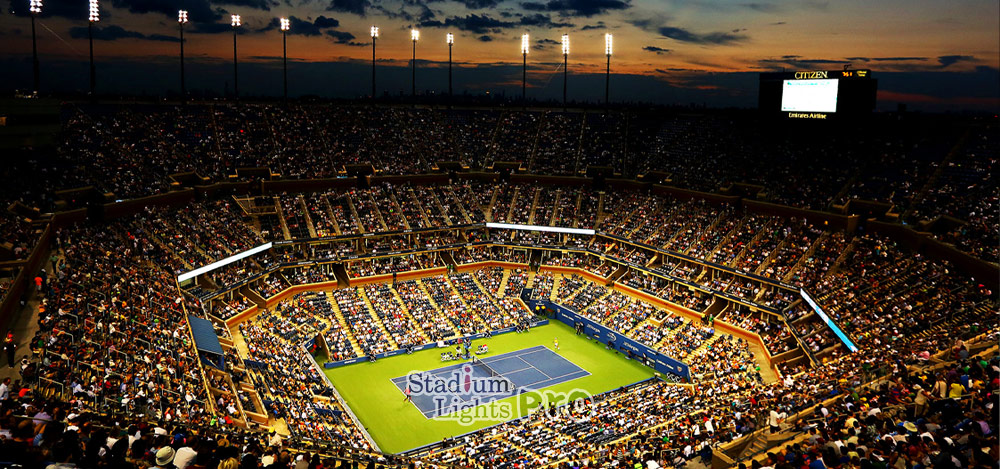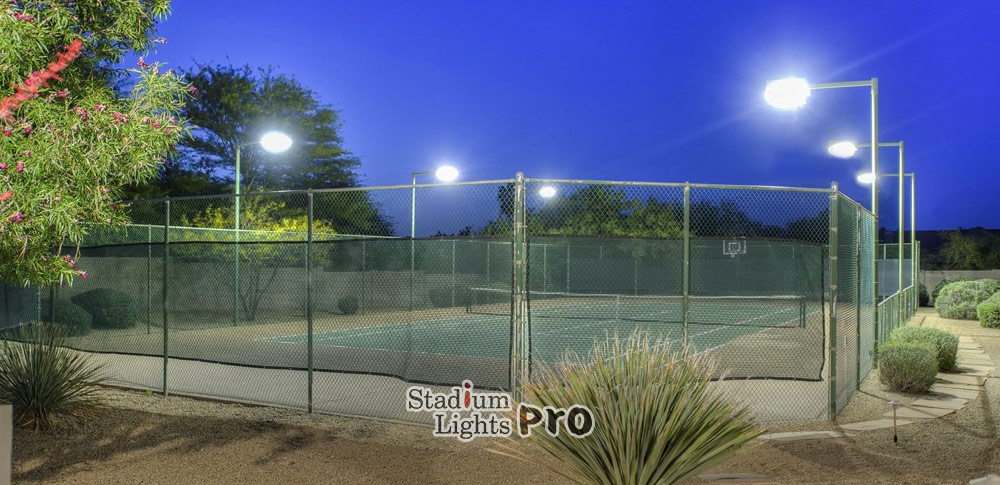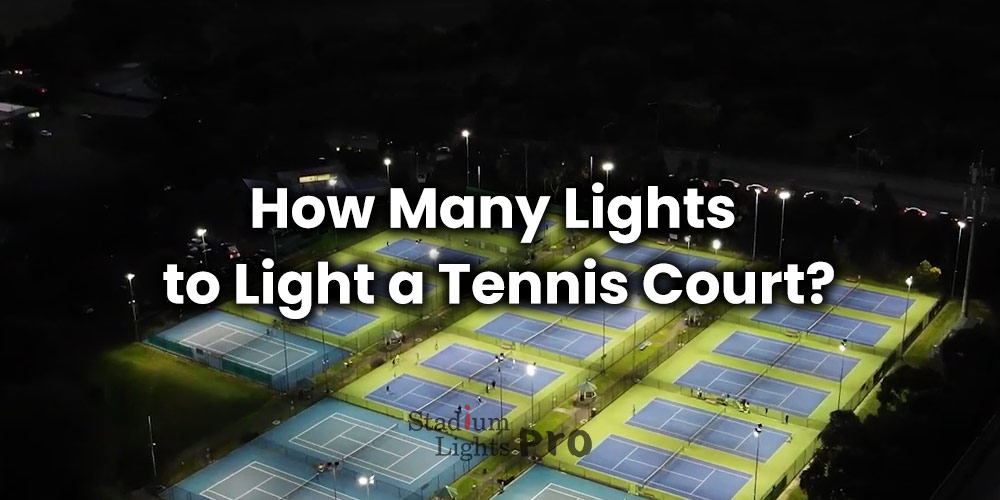Table of Contents
ToggleDetermine the size of the tennis court
To determine the size of a tennis court, you will need to measure the length and width of the playing area. A standard tennis court is 78 feet long and 36 feet wide, but the size may vary depending on the specific requirements of the facility or organization.
To measure the length of the tennis court, start at one end and measure to the other end using a tape measure or ruler. To measure the width, start at one side and measure to the other side.
It is recommended to accurately measure the size of the court in order to properly determine the number of lights needed and the placement of the lights. If the court is not a standard size, it may be necessary to consult with a lighting specialist to determine the appropriate number and placement of lights.
Consider the desired level of tennis court lighting

The desired level of lighting on a tennis court will depend on the type of play and the needs of the players. For recreational play, a lower level of lighting may be sufficient, while a higher level of lighting may be needed for competitive play.
To determine the desired level of lighting, consider the following factors:
The type of play
The type of play on a tennis court can impact the desired level of lighting. For recreational play, a lower level of lighting may be sufficient, while a higher level of lighting may be needed for competitive play.
Here are some factors to consider when determining the desired level of lighting based on the type of play:
Speed of play
Competitive play typically involves faster speeds and higher levels of intensity, which may require a higher level of lighting to ensure that players can clearly see the ball and the lines on the court.
Player skill level
Higher skill levels may require a higher level of lighting to ensure that players can clearly see the ball and react appropriately.
Lighting conditions
The lighting conditions during recreational play may be more relaxed, while competitive play may require a higher level of lighting to ensure that tennis players can perform at their best.
The time of day
The time of day can impact the desired level of lighting on a tennis court. During the day, there is typically more natural light available, which may be sufficient for recreational play. However, during the evening or early morning, there may be less natural light available, which may require a higher level of artificial lighting to ensure that the court is properly illuminated.
The availability of natural light
During the day, there may be enough natural light available to provide adequate illumination for the tennis court. However, during the evening or early morning, there may be less natural light available, which may require a higher level of artificial lighting.
The intensity of the light
The intensity of the light may need to be higher during the evening or early morning to compensate for the lower levels of natural light.
The visibility of the ball
A higher level of lighting may be needed during the evening or early morning to ensure that the ball is clearly visible to players.
The visibility of the lines
The lines on the tennis court should be clearly visible to players at all times, so it may be necessary to have a higher level of lighting during the evening or early morning to ensure that they are easily seen.
Calculate the number of tennis court lights needed

To calculate the number of lights needed for a tennis court based on the size of the court and the desired level of lighting, there are a number of factors to consider, including the height of the poles, the type of bulbs used, and the distance between the poles.
Here are some general guidelines for determining the number of lights needed based on the size of the court:
- For a standard 78-foot long by 36-foot wide tennis court, a minimum of 8 lights may be needed to provide adequate illumination.
- For a larger court, additional lights may be needed to provide sufficient coverage.
- The height of the poles can impact the number of lights needed, with higher poles requiring fewer lights to cover the same area.
- The type of bulbs used can also impact the number of lights needed, with more efficient bulbs requiring fewer lights to provide the same level of illumination.
- The distance between the poles should be considered to ensure that the lighting is evenly distributed across the court.
If you are unsure about the number of lights needed, it may be helpful to consult with a lighting specialist.
Determine the placement of the lights
The placement of the lights on a tennis court is a critical factor to consider to ensure that the court is properly illuminated and that the lighting is evenly distributed. Here are some general guidelines for determining the placement of lights on a tennis court:
Start by determining the placement of the poles
The poles should be placed at the corners of the court and along the sides to provide the best coverage.
Consider the height of the poles
The height of the poles will impact the coverage of the lights, with higher poles providing a wider coverage area.
Consider the distance between the poles
The distance between the poles should be calculated to ensure that the lighting is evenly distributed across the court.
Consider the direction of the lights
The direction of the lights should be angled downward to avoid glare and ensure that the lighting is evenly distributed across the court.
Test the placement of the lights
Once the placement of the lights has been determined, we need to test the lighting to ensure that it meets the desired level and that it is evenly distributed across the court. This can be done by playing a few games or drills during different times of day to see how the lighting affects play.
Install the lights according to local codes and regulations
We need to follow all local codes and regulations when installing lights on a tennis court to ensure the safety of players and spectators. Here are some general guidelines for installing lights according to local codes and regulations:
Research the local codes and regulations
Before installing the lights, research the local codes and regulations to ensure that you are following all applicable laws and requirements.
Obtain any necessary permits
Depending on the location of the tennis court and the type of installation, you may need to obtain permits before installing the lights.
Hire a licensed electrician
It is recommended to hire a licensed electrician to install the lights to ensure that the work is completed safely and to code.
Follow proper safety procedures
When installing the lights, we should follow proper safety procedures to avoid accidents and injuries. This may include using protective gear, such as gloves and hard hats, and following proper electrical safety guidelines.
By following these guidelines and working with a licensed electrician, you can ensure that the lights on your tennis court are installed safely and according to local codes and regulations.
It is always a good idea to seek the advice of professionals when designing the lighting for a tennis court. We can help you to determine the appropriate number and placement of lights based on the size and layout of your court, as well as your specific lighting needs.

